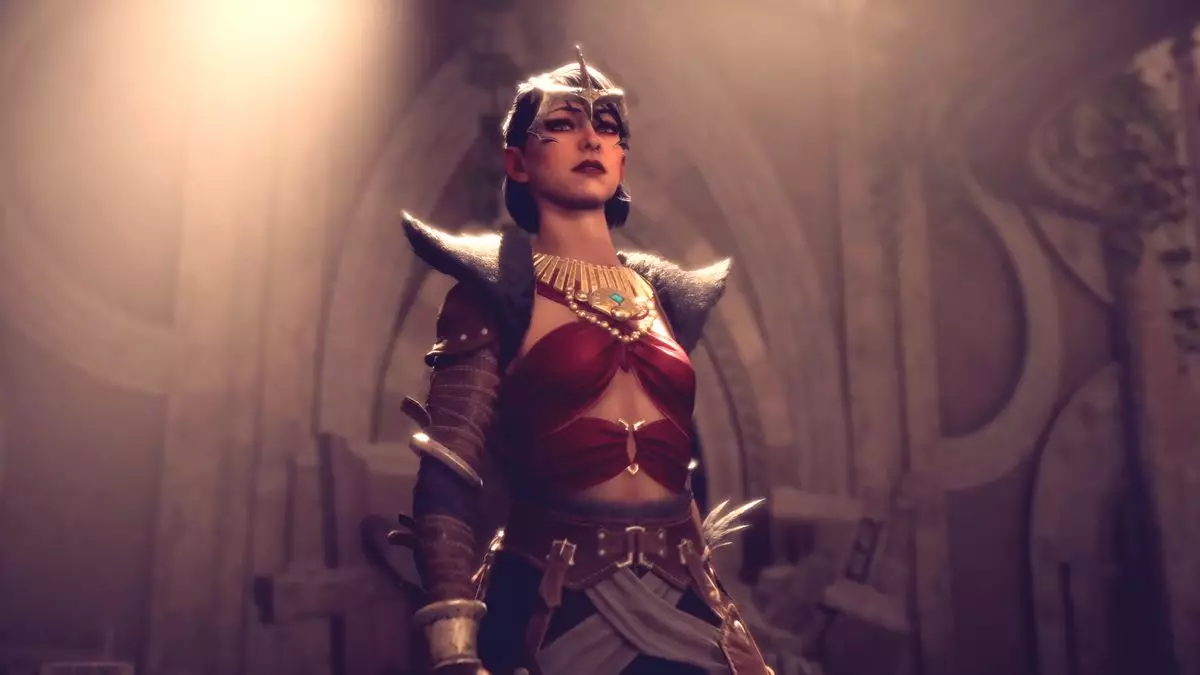Dragon Age, a series that has captured the hearts of gamers since its inception, owes much of its captivating narrative depth to its talented developers, particularly David Gaider, the renowned narrative designer and writer. His insights into the creative processes behind the first three games of this iconic franchise offer a fascinating glimpse into how characters were conceived and brought to life. A particularly intriguing tale is that of Morrigan, the enigmatic shapeshifting Witch of the Wilds, and how actress Claudia Black came to embody this beloved character. While many might assume a standard casting process, Gaider’s recent revelations showcase a unique journey filled with twists and unexpected turns.
When the initial concept for Morrigan was being formulated, Gaider drew inspiration from notable literary figures. He combined elements reminiscent of Morgan le Fey, a character steeped in mythical lore, with traits reflecting Delirium from Neil Gaiman’s Sandman series. This fusion began to shape a character that was not only powerful but also deeply flawed and yearning for connection despite her cynical demeanor. Such complexity is rare in video game characters, setting the stage for a figure that resonates with players on an emotional level, revealing how the creative process can lead to the birth of unforgettable personalities.
As the creative team began their search for the voice that would ultimately define Morrigan, they initially aimed for a voice actor who could echo certain cultural vibes, leading them to seek a Middle Eastern actress. Shoreh Aghdashloo was initially considered for the role of Flemeth, but when she withdrew due to film commitments, the quest for Morrigan’s voice took an unexpected turn. Suddenly, the team was devoid of viable candidates for both pivotal characters, highlighting the unpredictability that often characterizes the creative arts.
In a stroke of serendipity, Claudia Black’s audition would forever alter the trajectory of Morrigan’s character. Gaider recalls how a recording submitted by Black’s representation featured her performing a slow, beat-poet rendition of the iconic hip-hop song “Baby Got Back.” This unconventional audition not only showcased her distinctive voice but captured Gaider’s attention, revealing how a spontaneous choice can reveal the hidden potential of a performer. The instant connection he felt was not merely professional; his existing admiration for Black made her audition even more potent.
Despite Gaider’s enthusiasm for Black’s performance, he faced initial resistance from higher-ups in the development team. It’s fascinating to witness how creative battles often emerge within the industry, even against a backdrop of clear talent. However, Gaider’s conviction ultimately prevailed, and when given the creative freedom to interpret the character in her own way, Black delivered a performance that resonated deeply with everyone involved. This moment serves as a powerful reminder of the importance of trusting artistic instincts over rigid conventions.
The bond formed between Gaider and Black during the creative process bears testimony to the collaborative spirit that magnifies a game’s richness. Gaider’s charming anecdote about mistaking Black for a “cheap version of Helena Bonham Carter” underscores the humor and beauty of their working relationship—one marked by mutual respect and admiration. The character of Morrigan, once just an amalgam of myth and ideas, transformed into a pivotal element of Dragon Age: Origins, embodying emotional depth that resonated with players worldwide.
As Black reprised her role as Morrigan in Dragon Age: The Veilguard, she stepped back into a character that not only defined her career but also left an indelible mark on the franchise. Although Morrigan’s role has evolved over the years—no longer a companion in this installment—her magnetic presence continues to draw players in. Fans might initially feel the absence of her companionship but are compelled to remember that the essence of Morrigan endures in every interaction and narrative thread.
The story behind Morrigan’s creation is a testament to the creative synergy that can arise in the world of video game development. It showcases how spontaneous moments, unfiltered authenticity, and a willingness to embrace the unexpected can lead to the birth of a character that captivates audiences and changes narratives forever. The legacy of Morrigan, captured through Claudia Black’s voice and the artistry of David Gaider and his team, remains firmly embedded in the hearts of fans, ensuring that her story will endure across generations of gamers.

